这篇文章根据大漠老师的博文写成,请参考<a href="http://damoqiongqiu.github.io/">http://damoqiongqiu.github.io/</a>
搭建的效果请参考<a href="https://baipu.github.io">白璞的技术博客</a>
准备项:
注册一个github账号,创建项目
- 注册
首先你需要有一个github的账号,将来的文章将会将github当成仓库用。所以先注册账户吧:
点击这里进入github,然后按要求注册。 - 创建项目
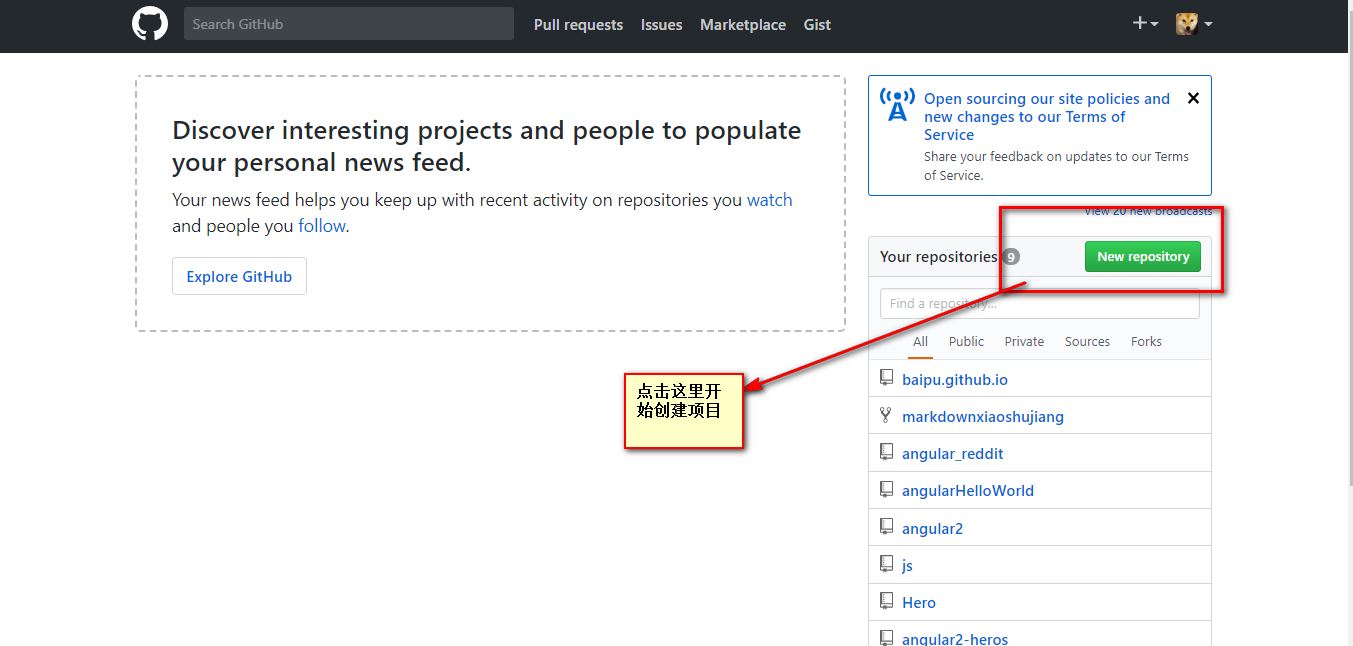 开始创建项目处
开始创建项目处
如果找不到上述页面那么下边这样也可以,总之随便点,就是找到repositories然后新建他
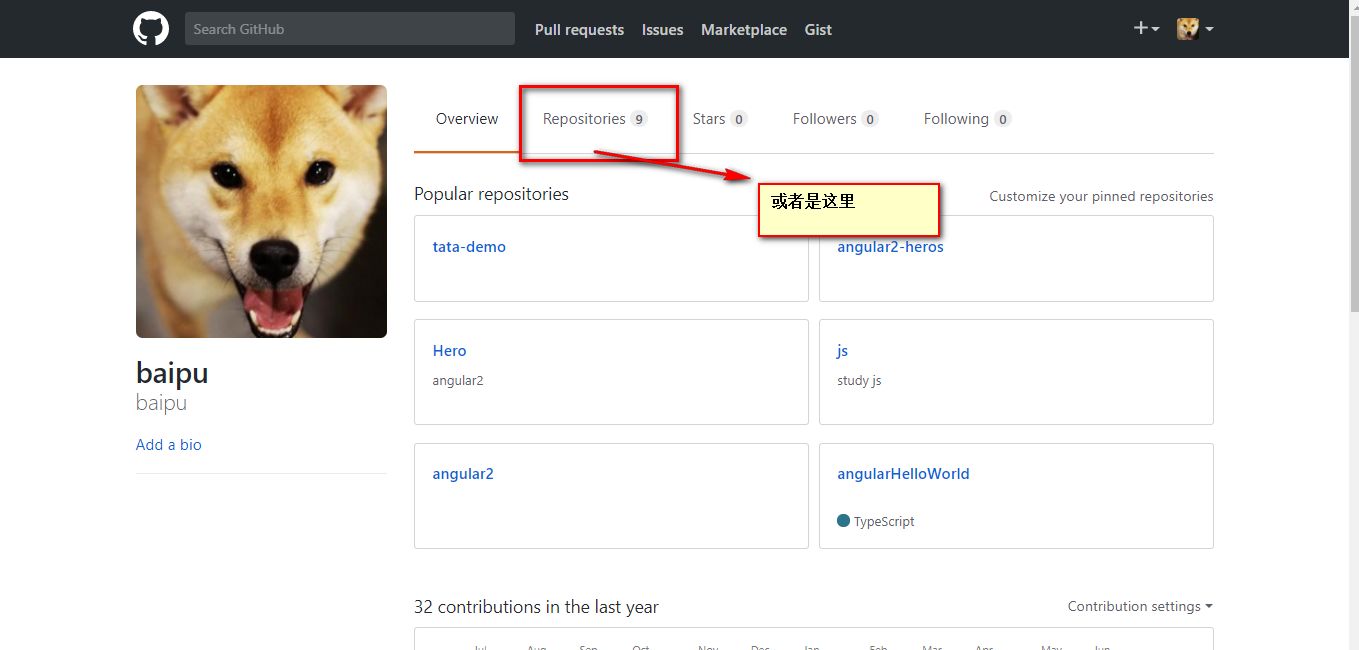 先点击这里
先点击这里
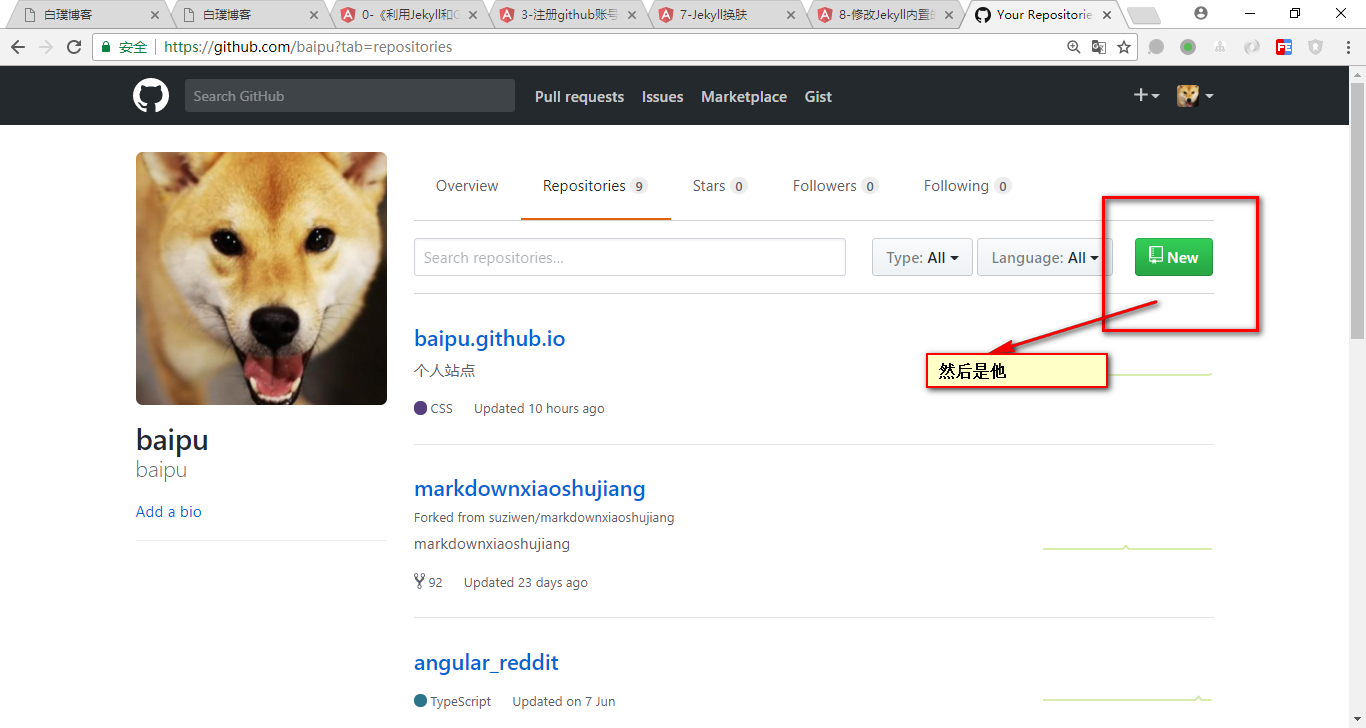 然后这里新建
然后这里新建
写你博客的域名,将来你就是根据这个网址访问你的博客,但是!!
注意了:
他的命名规范必须是:“xxx.github.io” 这里的xx必须是你github的名字,
 enter description here
enter description here
这里我的名字是baipu所以,就的是baipu.github.io名字必须是这个,我之前用的是baip有问题
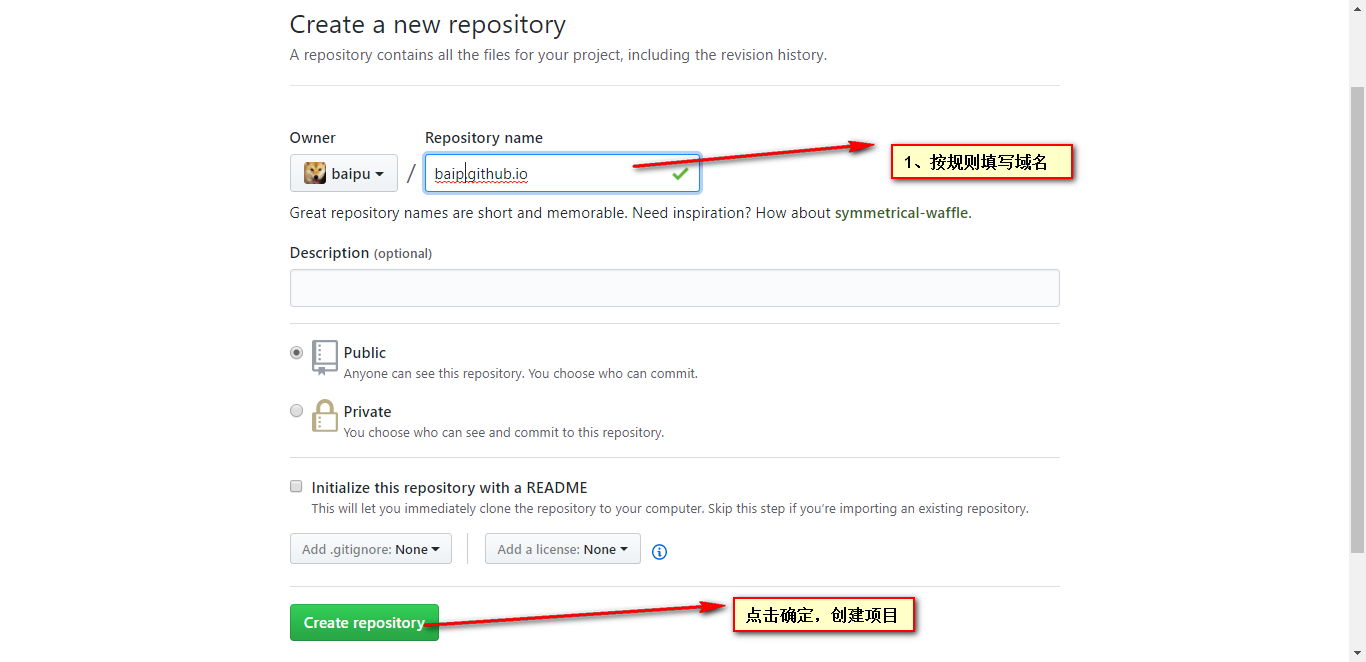 新建成功
新建成功
将工程拷到本地,有很多办法,包括git命令,github 或者是其他的:
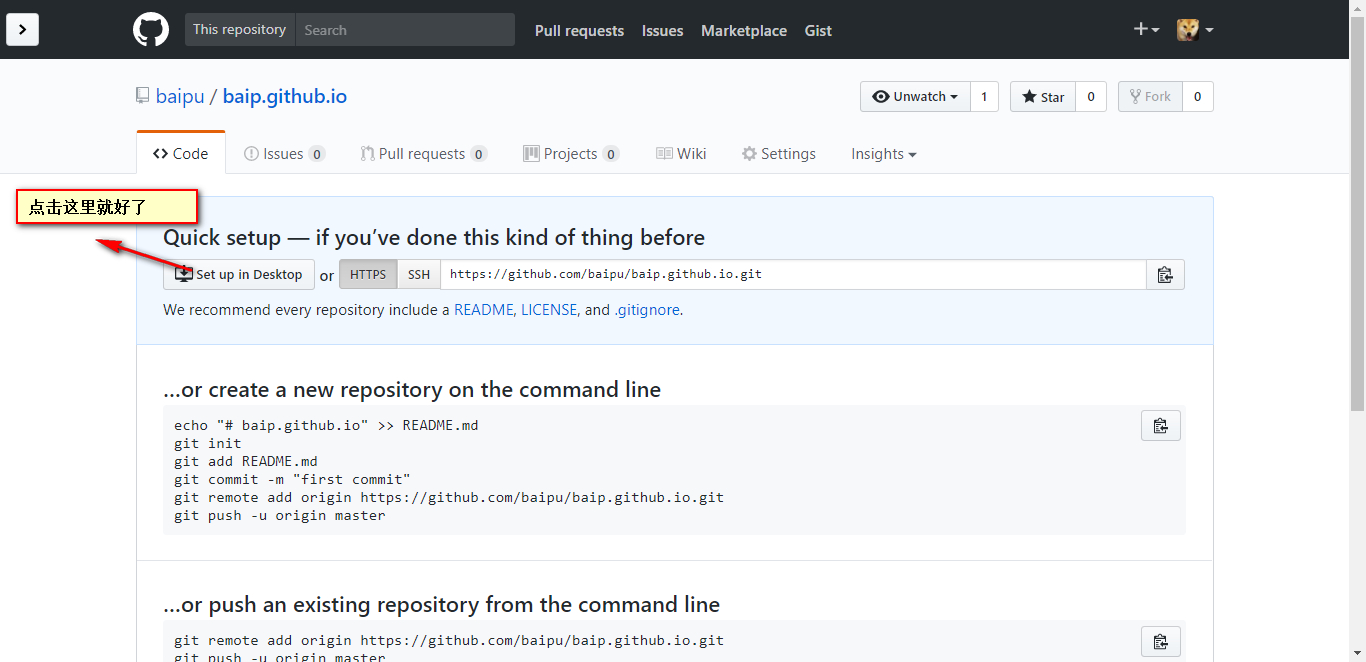 克隆下来
克隆下来
同过命令行的方法添加文件:不用管
echo "# baip.github.io" >> README.md
git init
git add README.md
git commit -m "first commit"
git remote add origin https://github.com/baipu/baip.github.io.git
git push -u origin master
要不就是从其它项目上拷过来的命令行,先不用管
git remote add origin https://github.com/baipu/baip.github.io.git
git push -u origin master
github的客户端里保存文件,如果没有装github可添加一个文件后,down下来
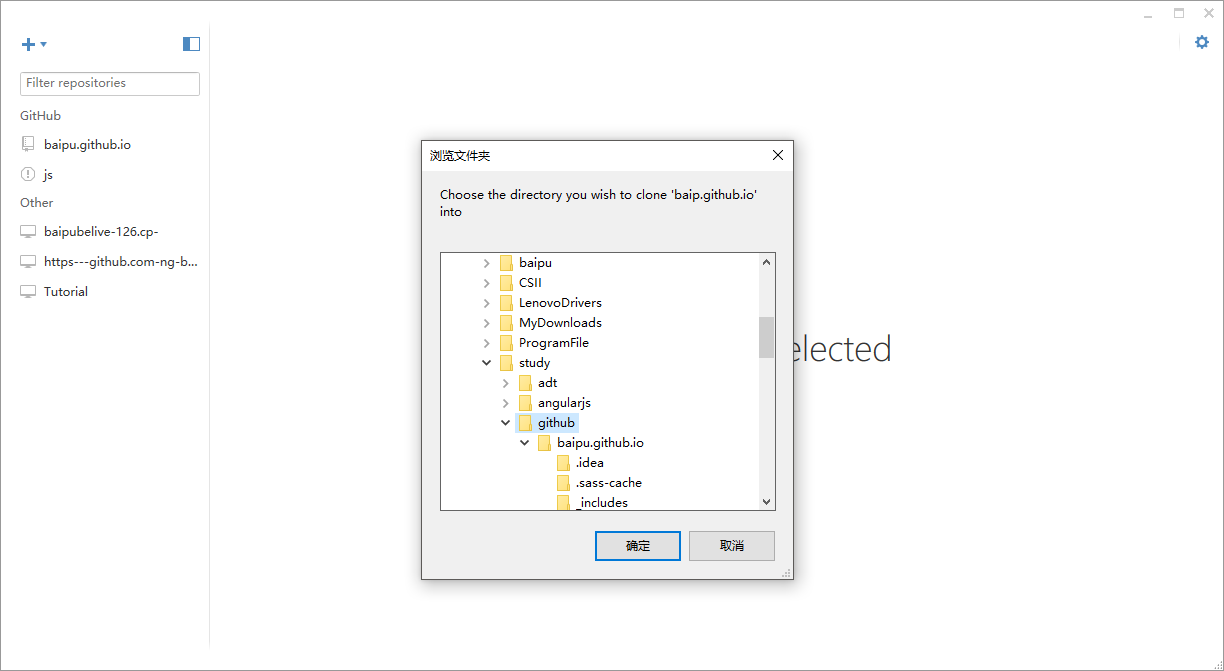 保存文件
保存文件
安装jekyll 并配置运行环境
下载ruby 和RubyGems下载页
下载rubygems后,具体页面就不详细截图了。解压,然后打开随便一个文件夹,不要点击任何文件,摁住shift键,同时鼠标右键,选择在此处打开命令窗口,书如Ruby -v和gem -v如果显示版本号,说明安装没问题
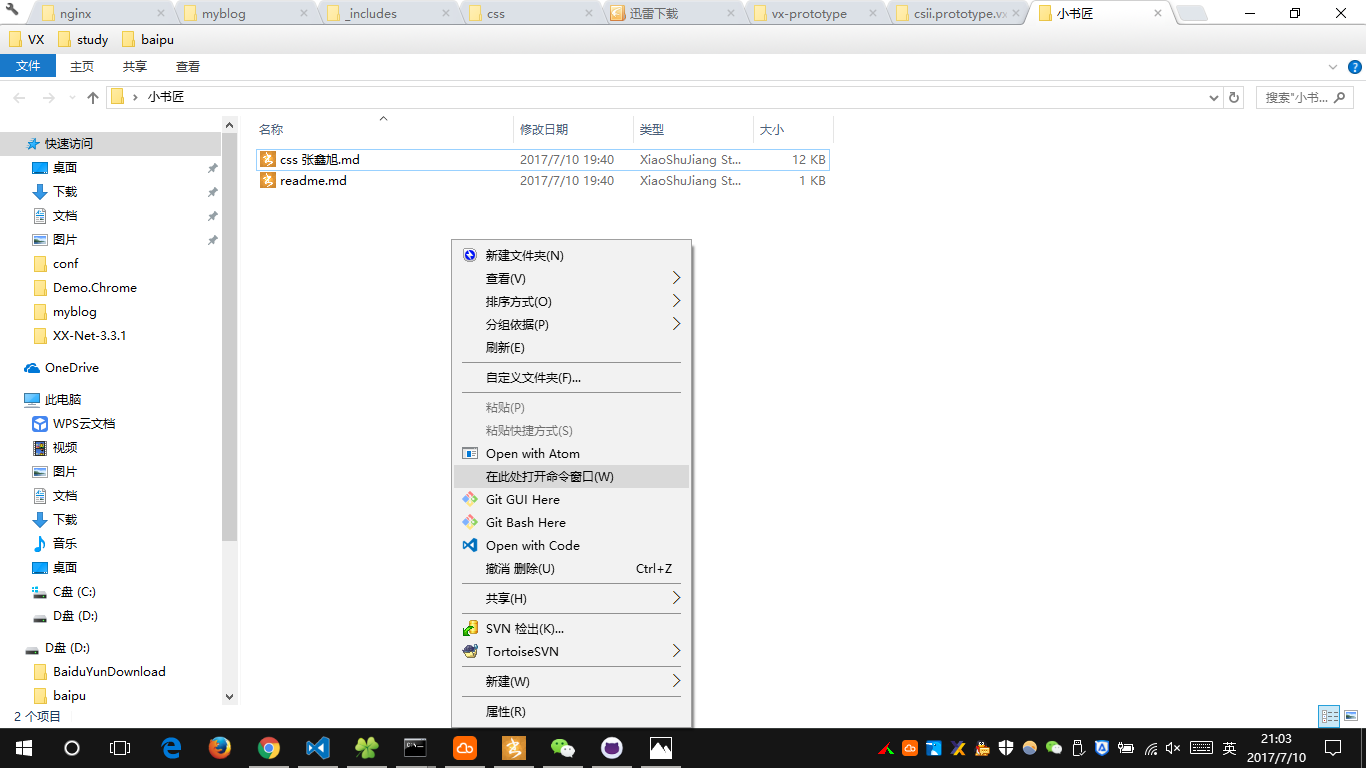 右键显示
右键显示
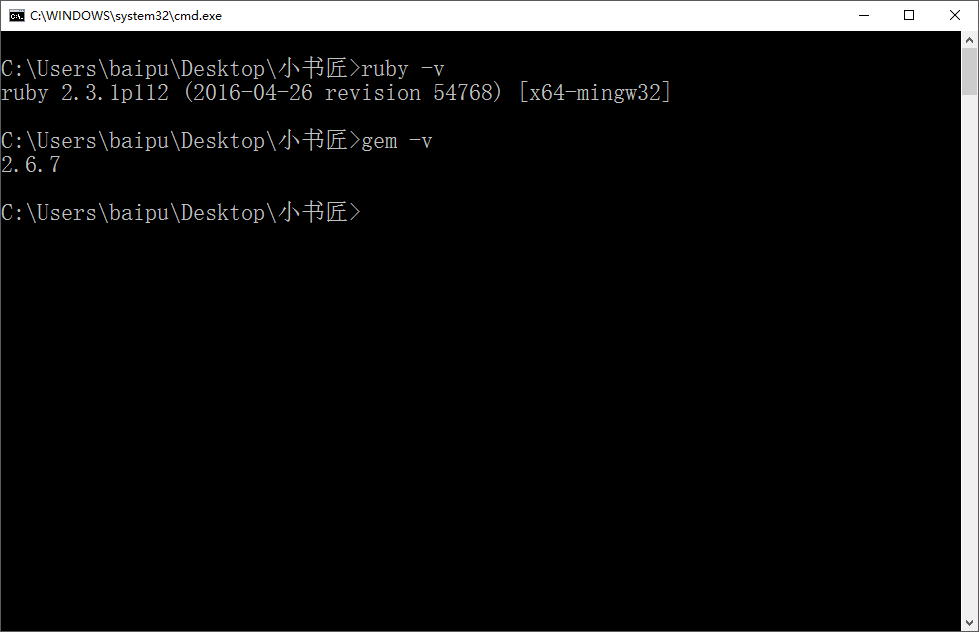 命令行显示
命令行显示
用Jekyll创建第一个项目
在你刚才拷下文件的外层目录上如上一样,右键,打开命令行,然后执行命令
gem install jekyll bundler
jekyll new baipu.github.io//jekyll new 此处是你刚才项目的名称
cd baipu.github.io//cd 你刚才项目的名称
bundle exec jekyll serve
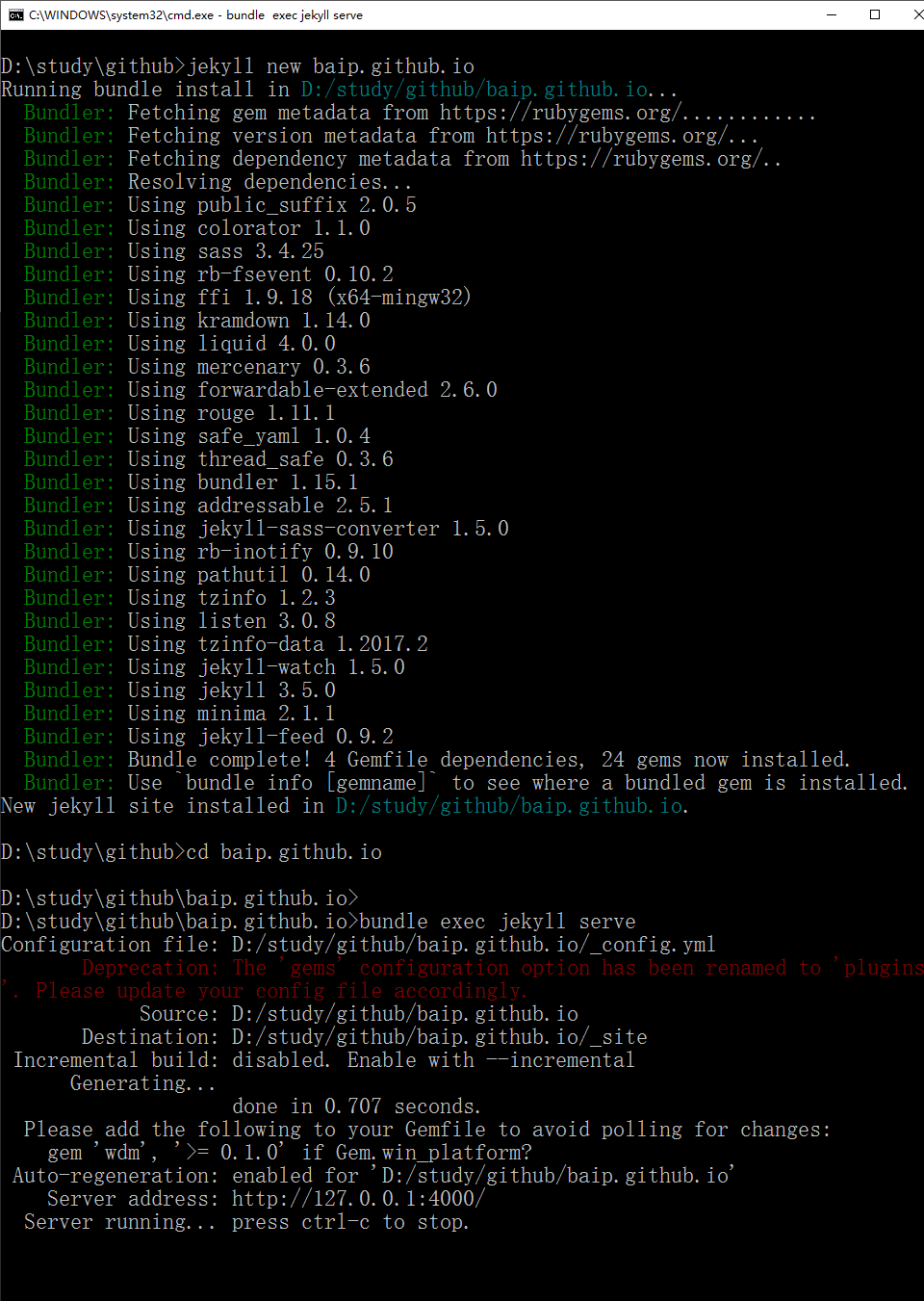 命令行的显示
命令行的显示
然后用编辑器打开项目,我用的是vscode
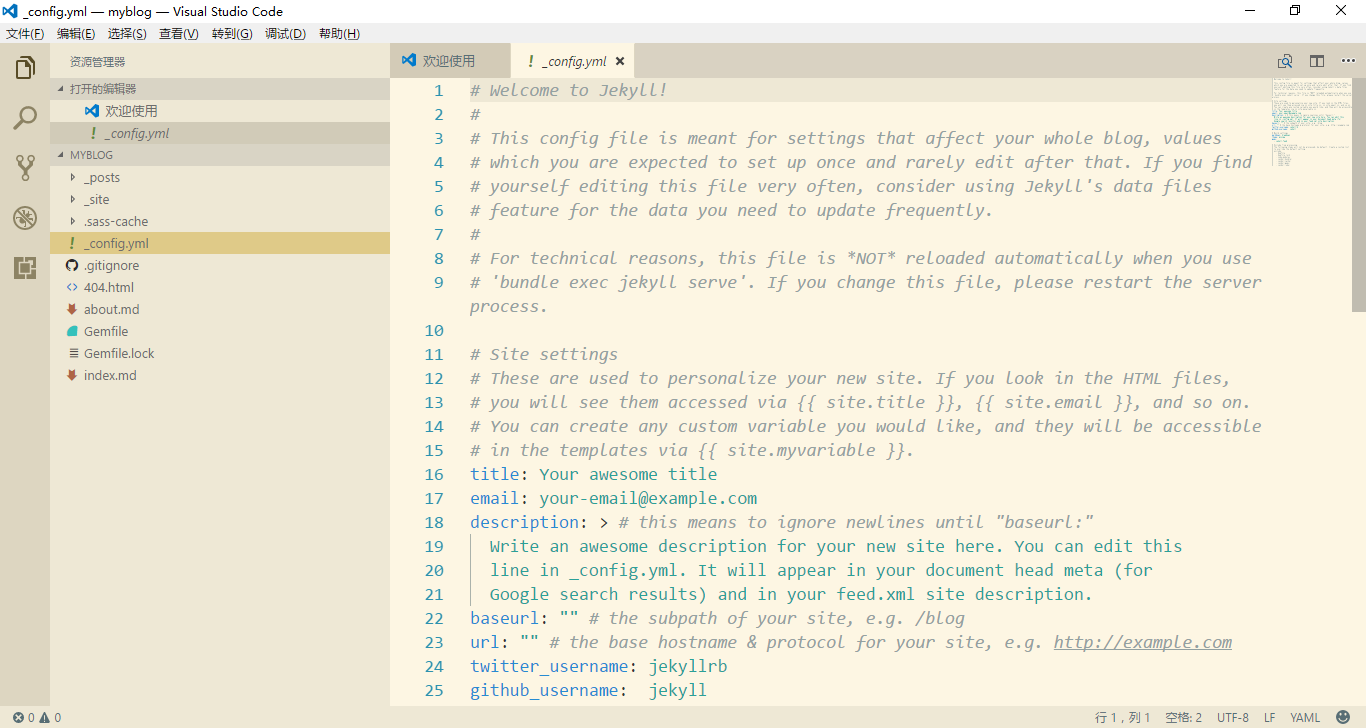 编辑器
编辑器
命令行先别关。
这时候需要对文件做一些修改:
注意
把.sass-cache和_site这两个目录添加到.gitignore文件里面去,目的是告诉git不要把这两个目录里面的内容推送到github上去,这是你本地用的,github不需要这些。如果你把_site目录推送到github仓库,github就不会自动帮你构建了。
gitigore文件里面内容如下,你可以拷贝粘贴到你的.gitignore文件里面去:
_site
.sass-cache
.jekyll-metadata
然后提交,发布如下,先提交,然后发布
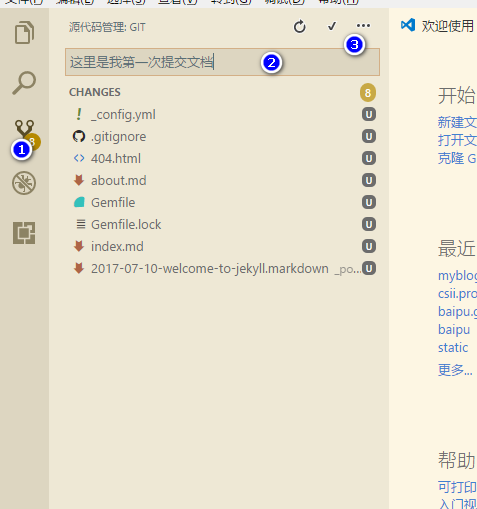 提交
提交
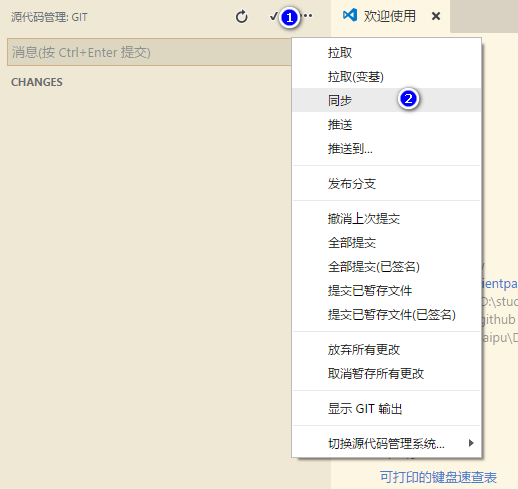 发布
发布
你本地的命令执行情况如图:
 本地服务
本地服务
打开链接http://你刚才注册的名字.github.io
注意,如果你是第一次push,github可能会等10分钟之后才会帮你构建,后续的所有push都会立即构建,所以如果现在没有内容的话,等10分钟再来刷新一下吧。
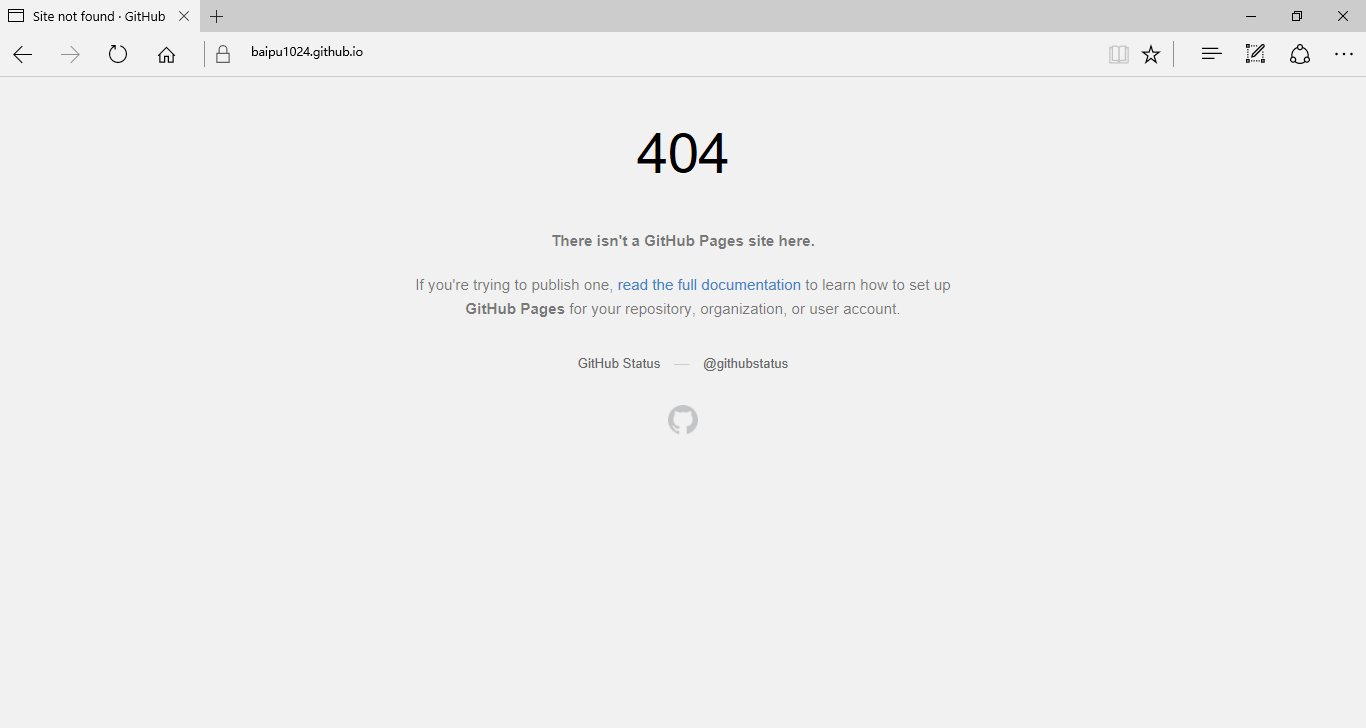 enter description here
enter description here
出来这个图不要急,看看你的项目名字和github的名字一样么?如果正常请跳过下列步骤,直接看添加文章
 enter description here
enter description here
如果不一样,在github上进入设置,然后修改名字
 enter description here
enter description here
修改的时候确保名字正确github的名字.github.io
网下拉,看到GitHub Pages下边是这个样子,说明能够访问
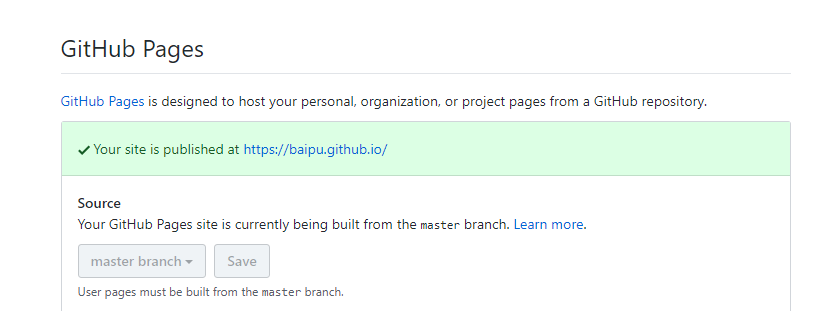 enter description here
enter description here
添加文章
用编辑器打开你github的项目:
添加文章就是相当于_posts文件夹里添加一个markdown的文件
文件名必须是2017-07-10-文件名
后缀必须是markdown不能是md
格式也必须是markdown的格式
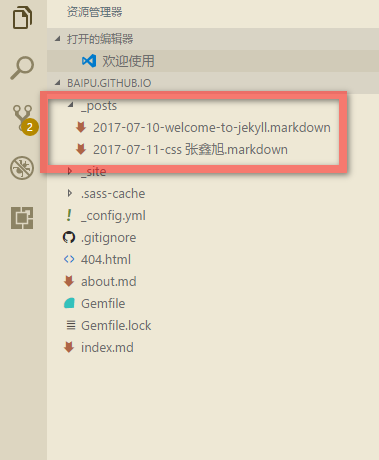 enter description here
enter description here
markdown的头部需要定制:
---
layout: post
title: "这是我自己的一篇文章"
date: 2017-07-04 10:51:20 +0800
categories: jekyll update
---
 enter description here
enter description here
除了这个头部声明之外,接下来你可以随意编写自己的内容了,markdown的语法:
http://www.appinn.com/markdown/
本地服务如下效果:
 enter description here
enter description here
然后提交commit push
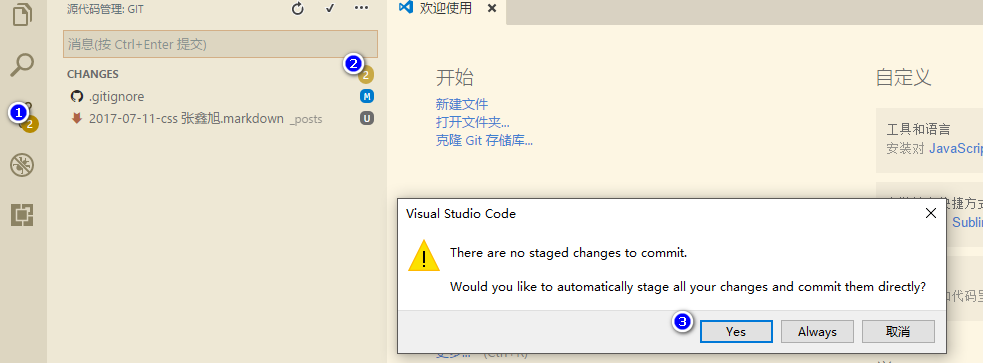 提交
提交
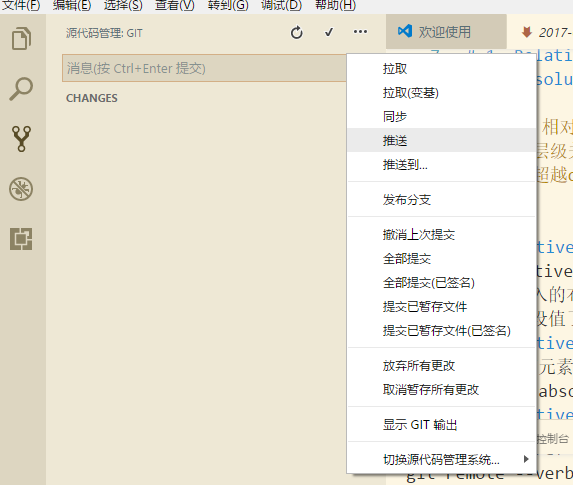 推送
推送
修改参数:
为了让title之类的显示自己的配置,可调试_config.yml文件
 enter description here
enter description here
改了配置文件后,需要重启服务
bundle exec jekyll serve
结果如图:
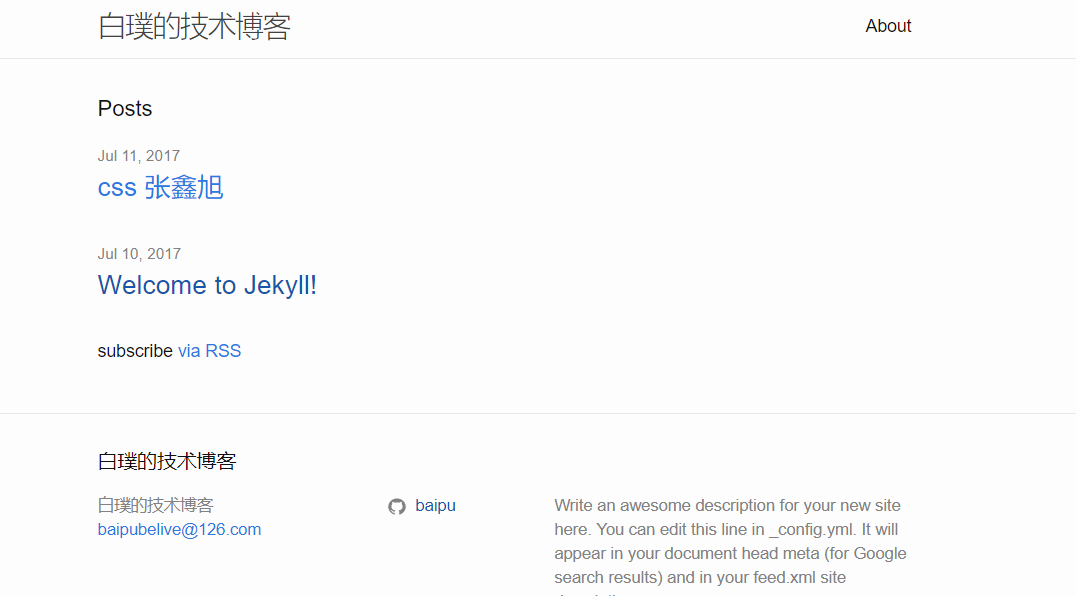 白璞的博客
白璞的博客
改变外观:
换系统默认的皮肤:
皮肤默认值好像是minima
找到皮肤的路径:
命令:bundle show minima
得到结果:
D:/study/Ruby23-x64/lib/ruby/gems/2.3.0/gems/minima-2.1.1
我们不用这个皮肤包,可以换,但是只能换几样,github支持的:
将他改成 目标点击查看github支持的皮肤
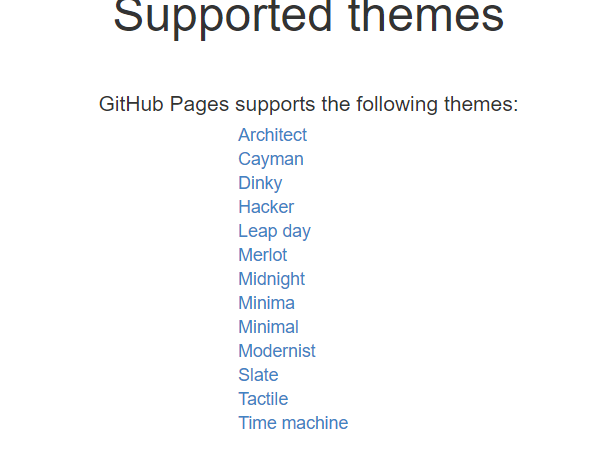 github支持的皮肤
github支持的皮肤
如果我们想换Architect需要三部
1、改两个配置文件
-
_config.yml里边的 theme 对应的值改成 jekyll-theme-architect -
Gemfile里边的 minima那一行变成 jekyll-theme-architect
 enter description here
enter description here
 enter description here
enter description here
2、 用gem安装皮肤:
bundle install
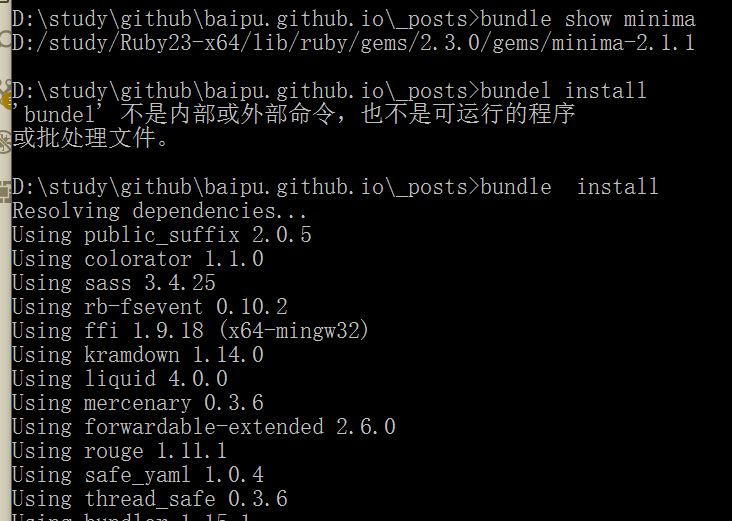 enter description here
enter description here
3、换模板,index.md about.md 以及
_post中的文件中的layout配置项全部改成default,就像这样: enter description here
enter description here
ctrl+C关闭服务,然后重启:
效果入下:
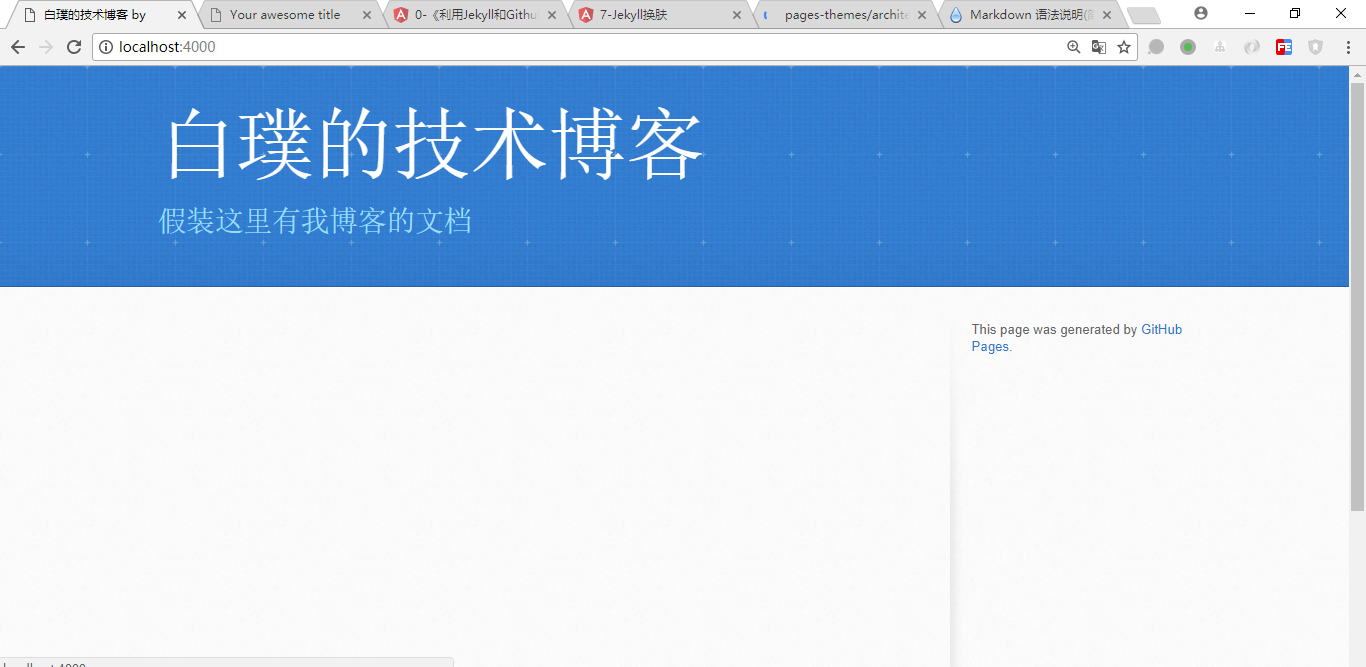 换过皮肤后
换过皮肤后
自己修改参数:
这次开始前需要把上一步的换肤步骤全部回退成默认格式
首先,打开你的命令行,运行以下命令,找到minima这款皮肤安装的位置:
bundle show minima
D:/study/Ruby23-x64/lib/ruby/gems/2.3.0/gems/minima-2.1.1
找到位置,将里边的文件夹复制出来
 enter description here
enter description here
结构如下:
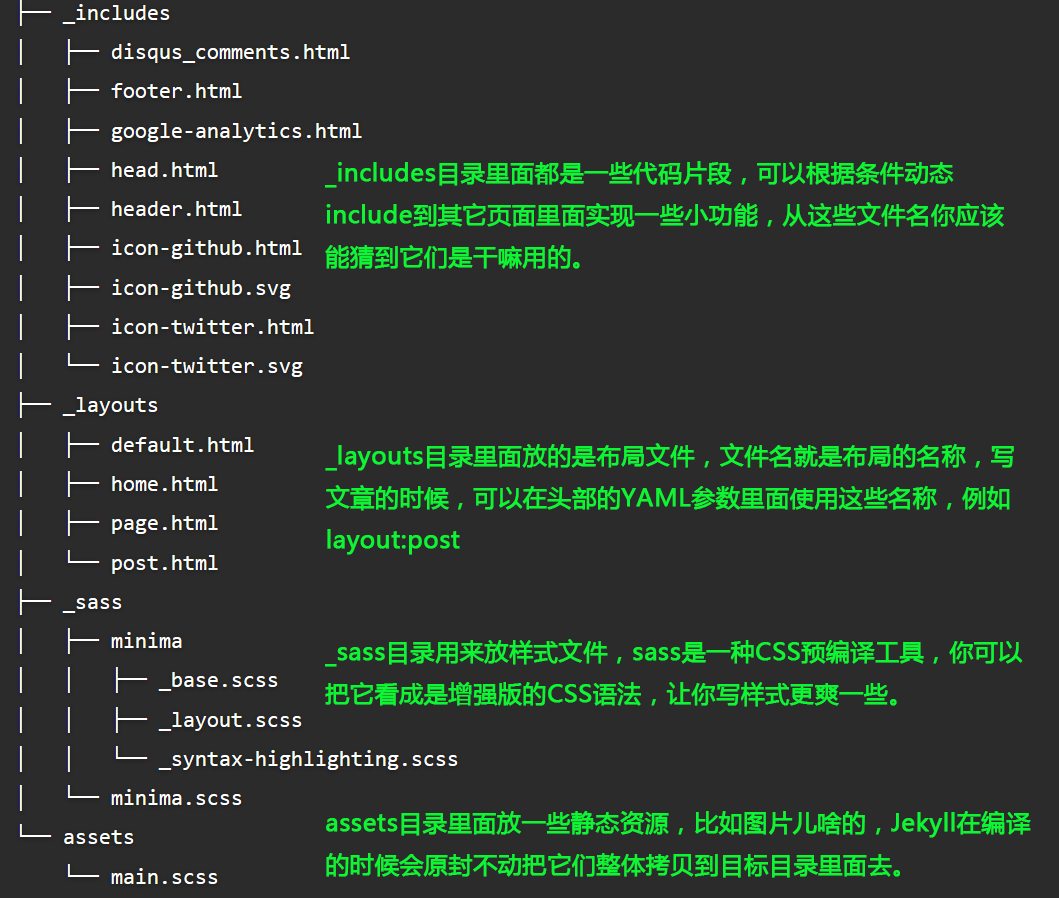 enter description here
enter description here
为了防止bundle update需要把上两个文件_config.yml和Gemfile的minima那一行删掉
然后就可已根据需求换参数了,比如改变日期格式:
两个文件:home.html 和post.html
日期格式改为:"%Y-%m-%d:%H:%M:%S"
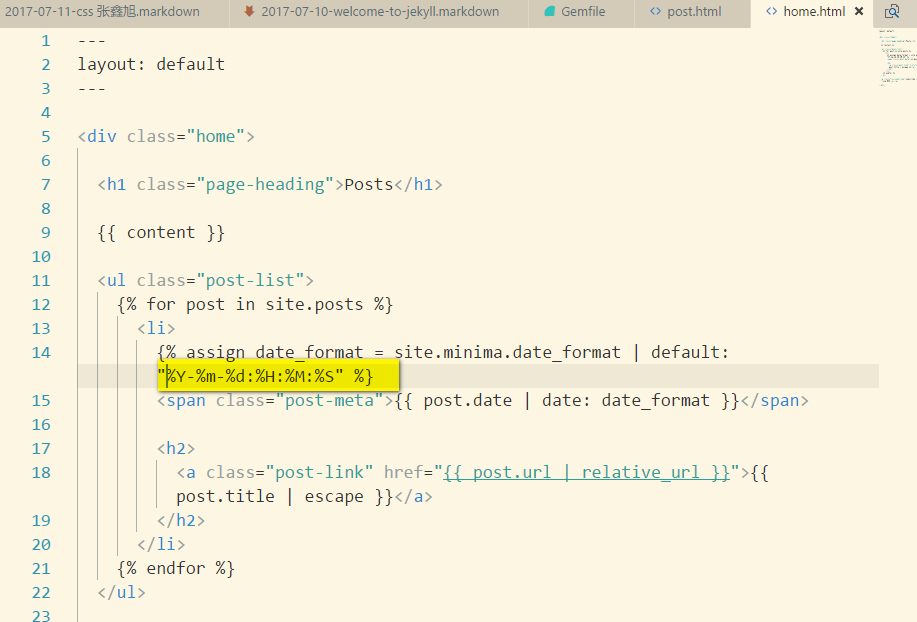 enter description here
enter description here
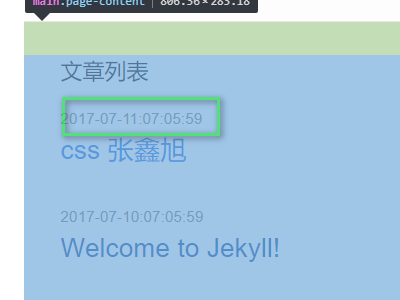 enter description here
enter description here
自己配置css
asset文件夹中新建css文件夹 引入bootstrap:
 enter description here
enter description here
然后是文件中引入:头文件配置中,也就是
_includ的head.html注意不是header.html下边的内容拷进去
<link rel="stylesheet" href="/assets/css/bootstrap-4.0.0-alpha.6/css/bootstrap.min.css">
<script src="https://code.jquery.com/jquery-3.2.1.min.js"></script>
<script src="https://cdnjs.cloudflare.com/ajax/libs/tether/1.4.0/js/tether.min.js"></script>
<script src="/assets/css/bootstrap-4.0.0-alpha.6/js/bootstrap.min.js"></script>
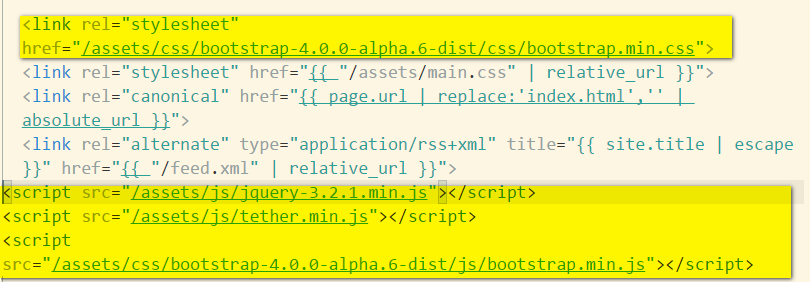 enter description here
enter description here
打开assets/main.scss,把里面的内容改成:
@import "my.scss";
Jekyll当前的版本是用Sass来做CSS预编译的,关于Sass的基本概念语法,请点击这个中文版教程查看。简而言之,你可以把Sass看成是CSS的增强版超集,也就是说,你在.sass文件里面写基本的CSS都是没问题的。
所以写scss的步骤:
1、就是上边的assets/main.scss里边会导入my.scss所以下一步创建
2、在scss文件夹下创建my.scss文件,然后继续导入不同的scss
@import
"my/base",
"my/layout",
"my/syntax-highlighting"
;
3、创建my文件夹,然后里边新建base layout scss文件
 enter description here
enter description here
如果想用一个github的nav那就改变header.html文件,如果你导入的bootstrap是4.0的,用下列的代码替换header.html的代码:
<nav class="navbar navbar-toggleable-md navbar-inverse bg-inverse fixed-top">
<button class="navbar-toggler" type="button" data-toggle="collapse" data-target="#navbarSupportedContent" aria-controls="navbarSupportedContent"
aria-expanded="false" aria-label="Toggle navigation">
<span class="navbar-toggler-icon"></span>
</button>
<div class="collapse navbar-collapse" id="navbarSupportedContent">
<ul class="navbar-nav mr-auto">
<li class="nav-item">
<a class="nav-link" href="/">我的文章</a>
</li>
<li class="nav-item">
<a class="nav-link" href="/videos/index.html">免费视频</a>
</li>
<li class="nav-item">
<a class="nav-link" href="/projects/index.html">开源项目</a>
</li>
<li class="nav-item">
<a class="nav-link" href="/social/index.html">在线交流</a>
</li>
</ul>
<ul class="navbar-nav">
<li class="nav-item">
<a class="nav-link" href="/about/index.html">关于我</a>
</li>
<li class="nav-item">
<a class="nav-link" href="/donate/index.html">赞助我</a>
</li>
</ul>
</div>
</nav>
那你将看到:bootstrap的头部
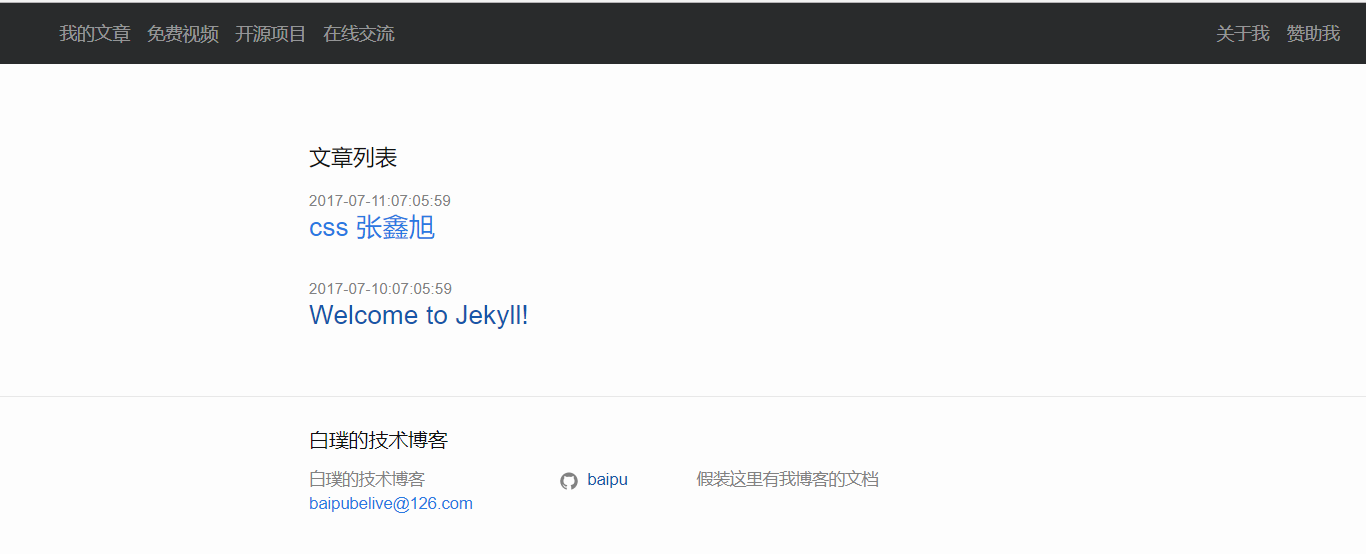 enter description here
enter description here
好,难点来了,以下几个环节可能需要翻墙,请自备梯子
利用Google Analytics监控你的Jekyll站点
Google Analytics(简称GA)是一个监控和分析工具,用来观察数据来源:
Jekyll集成Disqus评论模块
Jekyll的Disqus配置项
打开_layouts/post.html,你会在里面看到这样的内容:
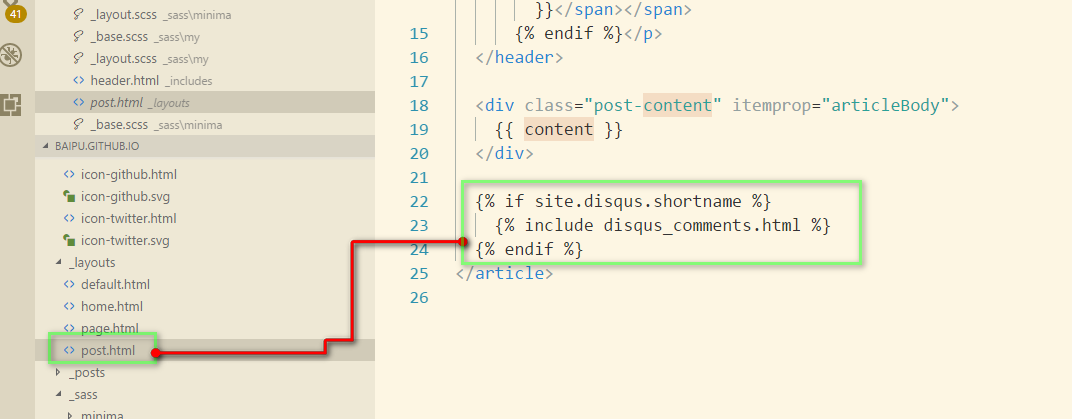 enter description here
enter description here
如果你的_config.yml里面出现了site.disqus.shortname这个配置项,那么就把disqus_comments.html包含进来,从文件名猜测,disqus_comments.html就是用来集成disqus的代码了。
1注册Disqus并拿到你的shortname
1.1 注册
点击这里注册disqus账号
1.2 进入
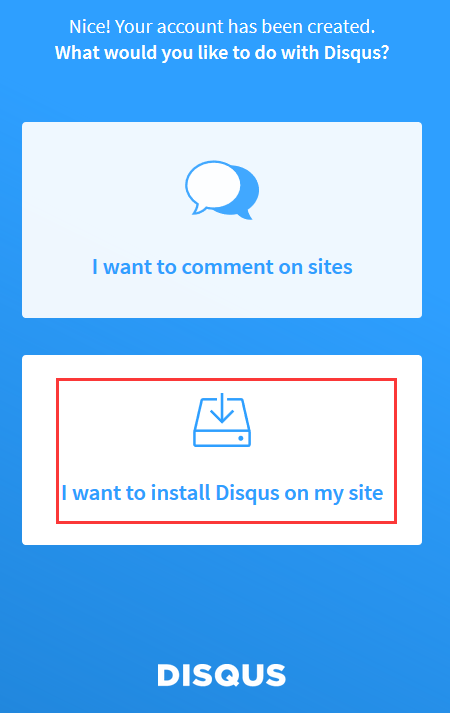 enter description here
enter description here
选建立自己的站点 画红线那个,然后按提示写自己的东西:
主要是website Name就是等会儿要用到的shortName
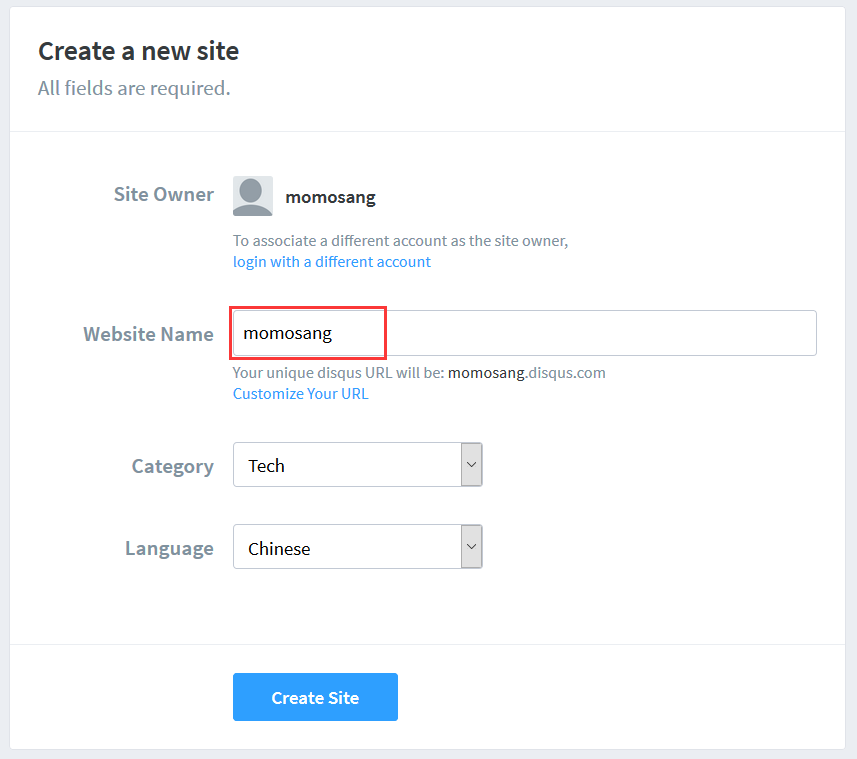 enter description here
enter description here
然后选择基础款,免费
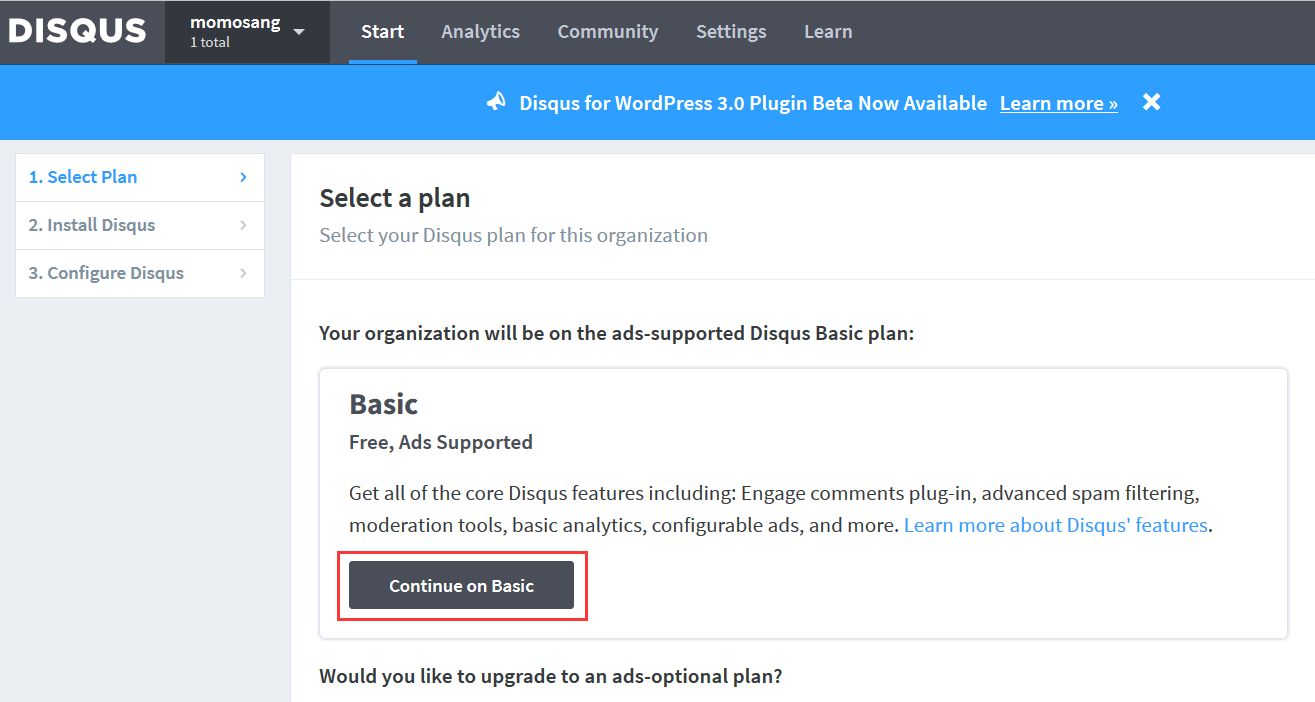 enter description here
enter description here
然后三排第四个:
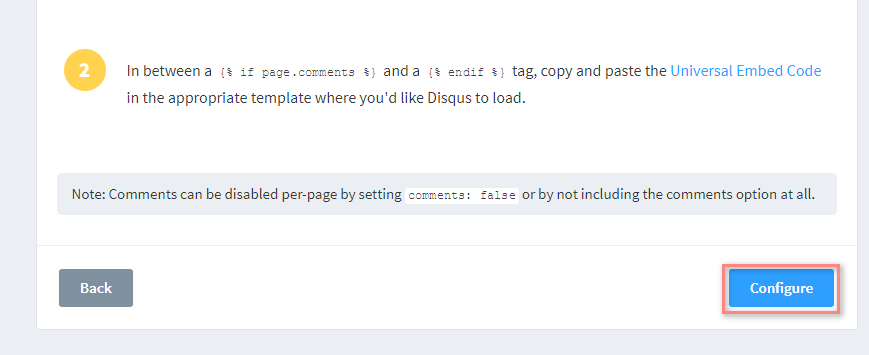 enter description here
enter description here
 enter description here
enter description here
填写配置
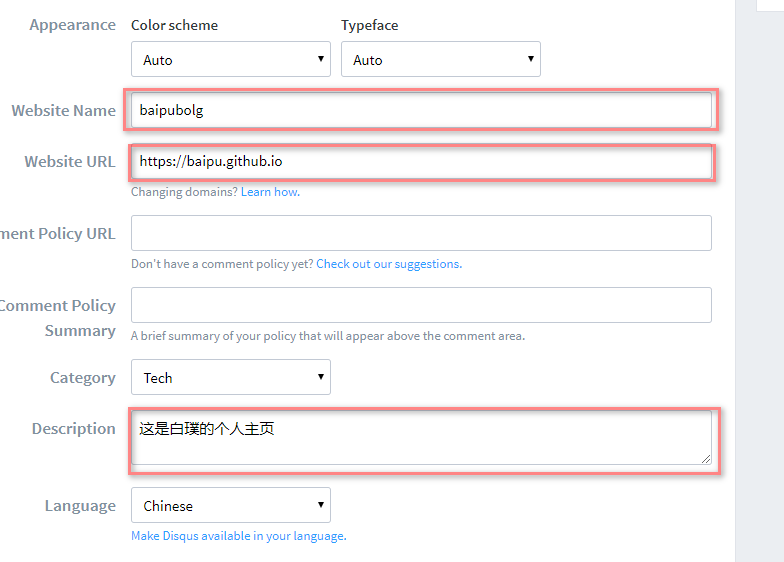 enter description here
enter description here
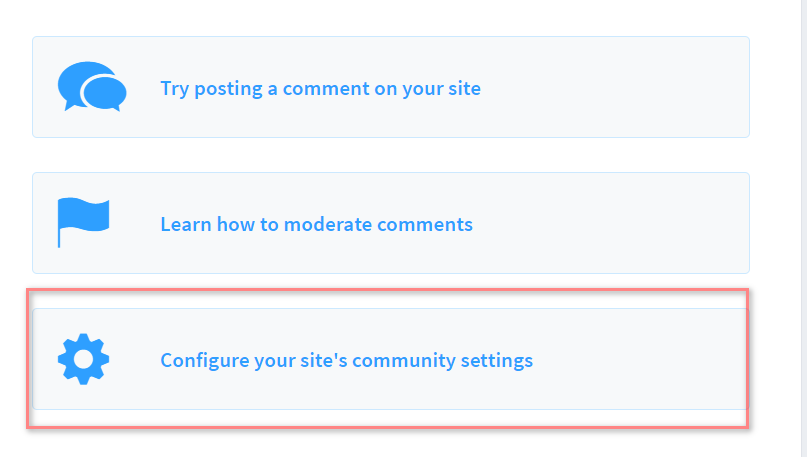 enter description here
enter description here
得到shortName,记住的的shortName
 enter description here
enter description here
1.4 进行配置:
_config/yml文件里添加如下配置:
disqus:
shortname: 你的shortName
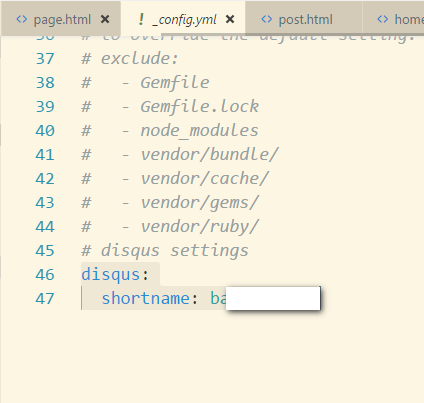 enter description here
enter description here
此时理论上就可出现了,提交到github上然后更新
如果没有出现,请按照如下流程检查
post.html里边是否有这段代码,没有请复制:
{% if site.disqus.shortname %}
{% include disqus_comments.html %}
{% endif %}
 enter description here
enter description here
要么就在文章中添加这个字段:
comments其实 我也不咋知道这个字段是干嘛的,将来找到了会改
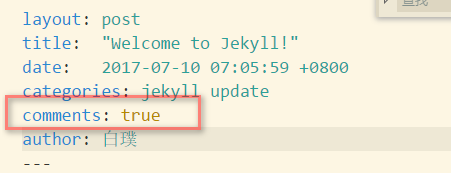 enter description here
enter description here
因为如下图有判断,environment在github上为生产环境,本地的话是开发环境不满足,但是这里的comment是什么意思我不懂,所以强制给了一个true
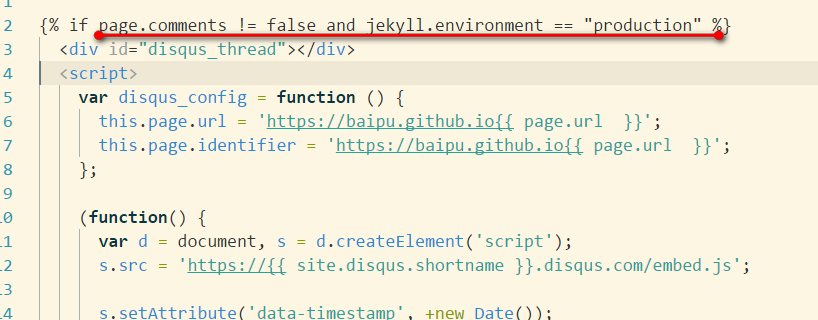 enter description here
enter description here
然后发布:
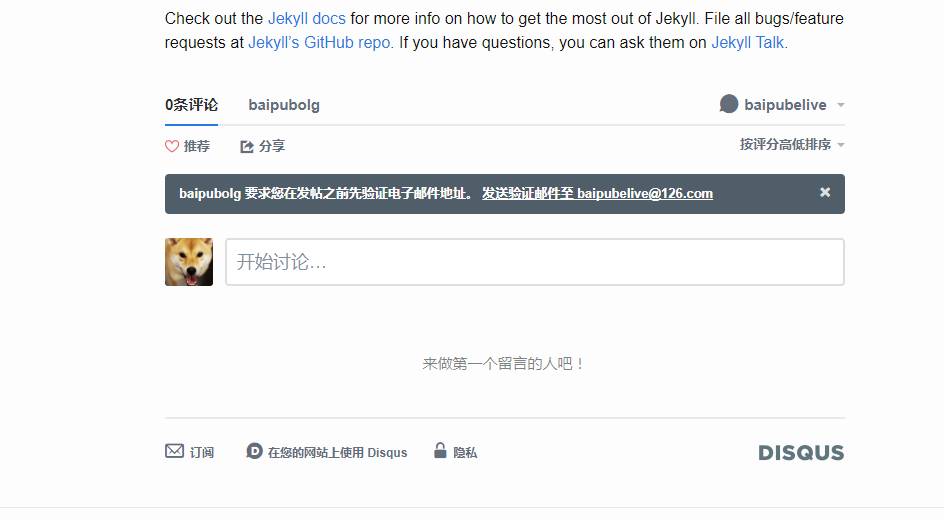 enter description here
enter description here
分类:
这个完全抄自大漠穷求:
1、_layout里边新建一个文件:category.html
2、里边的代码改为:
---
layout: default
---
{% assign rawcats = "" %}
{% for post in site.posts %}
{% assign tcats = post.category | join:'|' | append:'|' %}
{% assign rawcats = rawcats | append:tcats %}
{% endfor %}
{% assign rawcats = rawcats | split:'|' | sort %}
{% assign cats = "" %}
{% for cat in rawcats %}
{% if cat != "" %}
{% if cats == "" %}
{% assign cats = cat | split:'|' %}
{% endif %}
{% unless cats contains cat %}
{% assign cats = cats | join:'|' | append:'|' | append:cat | split:'|' %}
{% endunless %}
{% endif %}
{% endfor %}
<div class="row">
<div class="col-md-9">
<div class="list-group">
{% assign date_format = site.minima.date_format | default: "%Y-%m-%d %H:%M:%S" %}
{% for ct in cats %}
<li class="list-group-item list-group-item-info" id="{{ ct | slugify }}"><strong>{{ ct }}</strong></li>
{% for post in site.posts %}
{% if post.category contains ct %}
<a href="{{ post.url | relative_url }}" class="list-group-item list-group-item-action flex-column align-items-start">
<div class="d-flex w-100 justify-content-between">
<h5 class="mb-1">{{ post.title | escape }}</h5>
<small>{{ post.date | date: date_format }}</small>
</div>
</a>
{% endif %}
{% endfor %}
{% endfor %}
</div>
</div>
<div class="col-md-3">
</div>
</div>
3、文章中添加分类字段:
category: this is demo
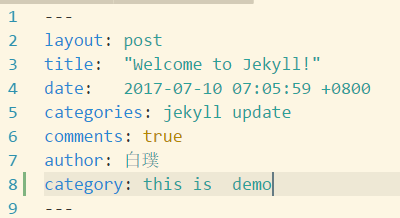 enter description here
enter description here
结果如图:
 enter description here
enter description here












网友评论